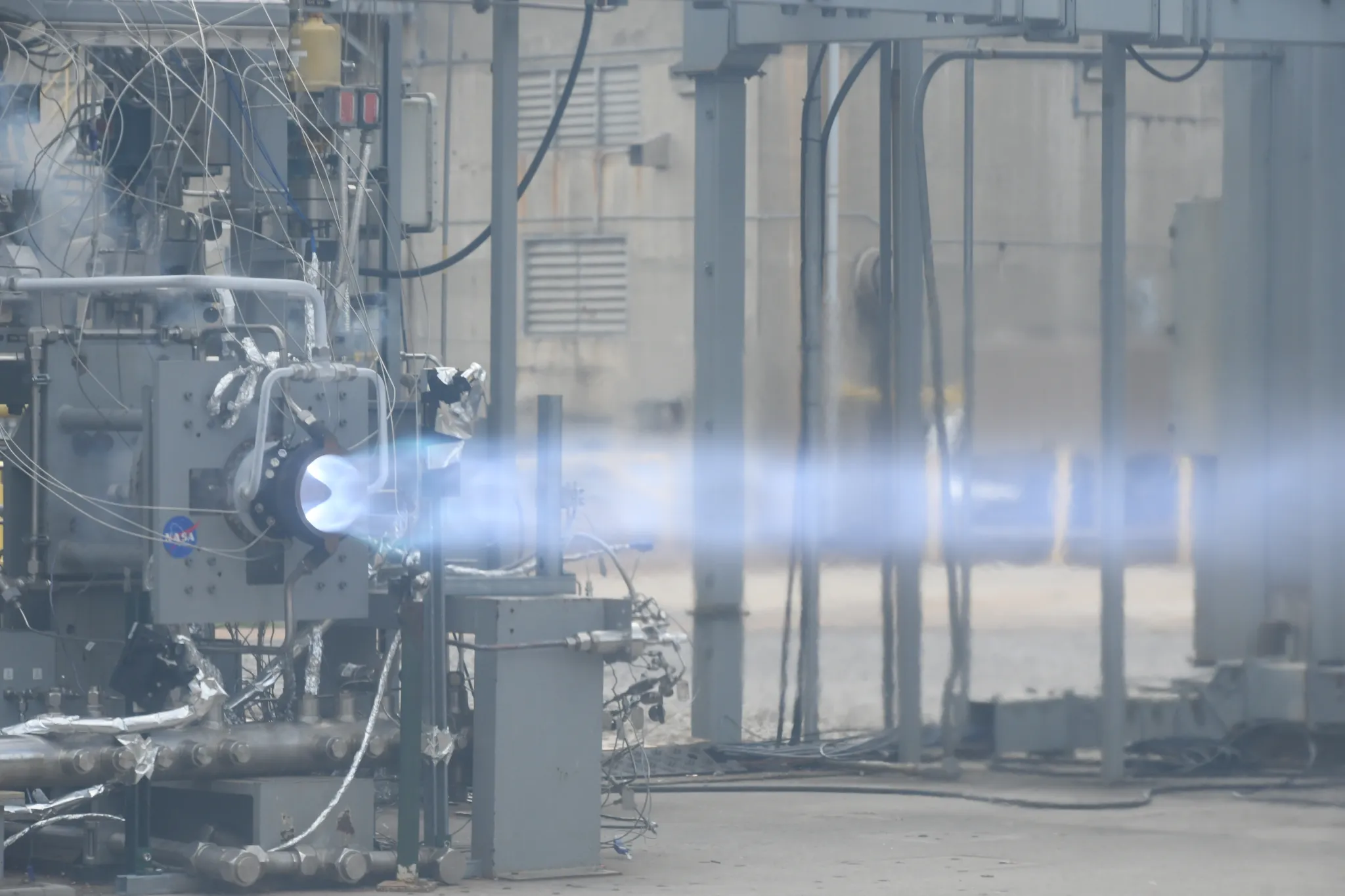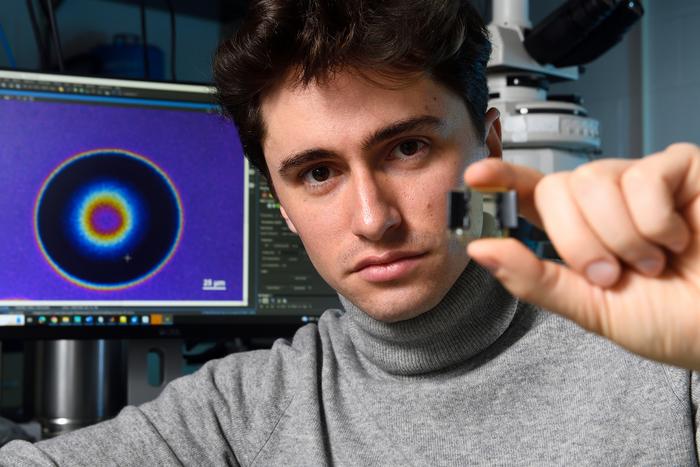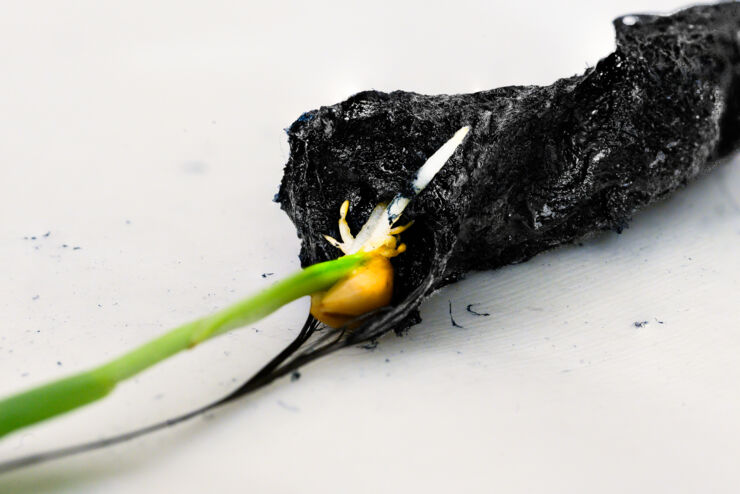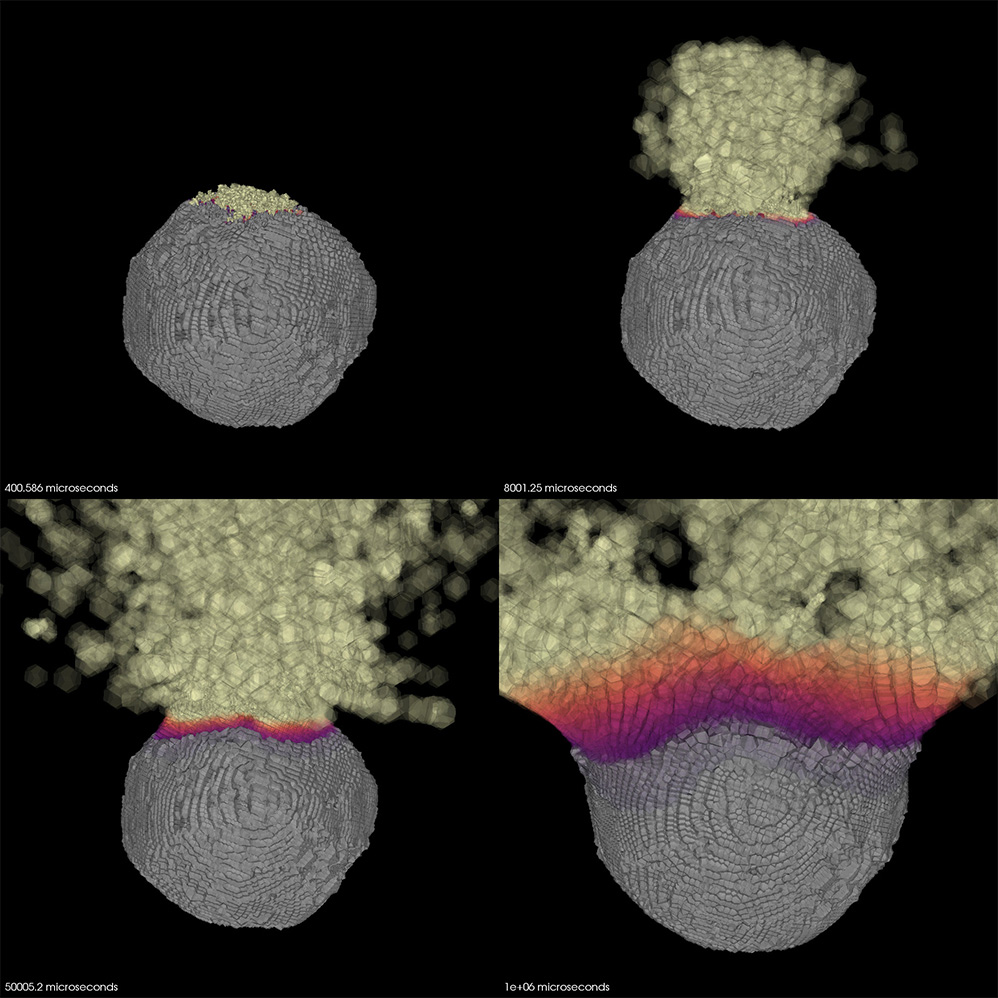
NASA has achieved a new benchmark in developing an innovative propulsion system called the Rotating Detonation Rocket Engine (RDRE). Engineers at NASA’s Marshall Space Flight Center in Huntsville, Alabama, successfully tested a novel, 3D-printed RDRE for 251 seconds (or longer than four minutes), producing more than 5,800 pounds of thrust.
That kind of sustained burn emulates typical requirements for a lander touchdown or a deep-space burn that could set a spacecraft on course from the Moon to Mars, said Marshall combustion devices engineer Thomas Teasley, who leads the RDRE test effort at the center.
RDRE’s first hot fire test was performed at Marshall in the summer of 2022 in partnership with In Space LLC and Purdue University, both of Lafayette, Indiana. That test produced more than 4,000 pounds of thrust for nearly a minute. The primary goal of the latest test, Teasley noted, is to better understand how to scale the combustor to different thrust classes, supporting engine systems of all types and maximizing the variety of missions it could serve, from landers to upper stage engines to supersonic retropropulsion, a deceleration technique that could land larger payloads – or even humans – on the surface of Mars.
Test stand video captured at NASA’s Marshall Space Flight Center in Huntsville, Alabama, shows ignition of a full-scale Rotating Detonation Rocket Engine combustor, which was fired for a record 251 seconds and achieved more than 5,800 pounds of thrust.
“The RDRE enables a huge leap in design efficiency,” he said. “It demonstrates we are closer to making lightweight propulsion systems that will allow us to send more mass and payload further into deep space, a critical component to NASA’s Moon to Mars vision.”
Engineers at NASA’s Glenn Research Center in Cleveland and researchers at Venus Aerospace of Houston, Texas, are working with NASA Marshall to identify how to scale the technology for higher performance.
Original Article: NASA’s 3D-printed Rotating Detonation Rocket Engine Test a Success
More from: NASA | Purdue University
The Latest Updates from Bing News
Go deeper with Bing News on:
Rotating Detonation Rocket Engine
- Superfast drone fitted with new 'rotating detonation rocket engine' approaches the speed of sound
Venus Aerospace has completed the inaugural test flight of a drone fitted with its "rotating detonation rocket engine" (RDRE) — accelerating it to just under the speed of sound. The company ...
- This insanely fast rocket-powered drone can almost reach Mach 1
The drone is able to reach these milestones thanks to a new “rotating detonation rocket engine” or RDRE attached to it. The hope is to one day attach these engines to commercial jets ...
- Bid to create 6,900mph passenger jet with new ‘rocket engine’ that could fly from London to San Francisco in one hour
Venus Aerospace successfully completed the test flight of its drone with a "rotating detonation rocket engine." The company hopes to use this type of engine to build commercial Mach 9 speed planes ...
- Superfast drone fitted with new 'rotating detonation rocket engine' approaches the speed of sound
Venus Aerospace has completed the inaugural test flight of a drone fitted with its "rotating detonation rocket engine" (RDRE) — accelerating it to just under the speed of sound. The company wants to ...
- Japanese Rocket Engine Explodes: Continuously And On Purpose
However, the Japan Aerospace Exploration Agency (JAXA) has recently completed a successful test of a different type of rocket, known as a rotating detonation engine. The engine relies on an ...
Go deeper with Bing News on:
RDRE
- This insanely fast rocket-powered drone can almost reach Mach 1
Engineers have successfully flown a superfast drone that can reach close to Mach 1, which is the speed of sound. The drone is able to … The post This insanely fast rocket-powered drone can almost ...
- Plan to create 11104km passenger jet boosted by drone test with close to speed of sound ‘detonation rocket engine’
Picture: Venus Aerospace “The test successfully demonstrated flight controls, stability, one leg of the ultimate Rotating Detonation Rocket Engine (RDRE) propulsion system, telemetry ...
- Superfast drone fitted with new 'rotating detonation rocket engine' approaches the speed of sound
Venus Aerospace has completed the inaugural test flight of a drone fitted with its "rotating detonation rocket engine" (RDRE) — accelerating it to just under the speed of sound. The company ...
- Bid to create 6,900mph passenger jet with new ‘rocket engine’ that could fly from London to San Francisco in one hour
"The test successfully demonstrated flight controls, stability, one leg of the ultimate Rotating Detonation Rocket Engine (RDRE) propulsion system, telemetry, ground operations, and air launch.
- Superfast drone fitted with new 'rotating detonation rocket engine' approaches the speed of sound
Venus Aerospace has completed the inaugural test flight of a drone fitted with its "rotating detonation rocket engine" (RDRE) — accelerating it to just under the speed of sound. The company wants to ...










